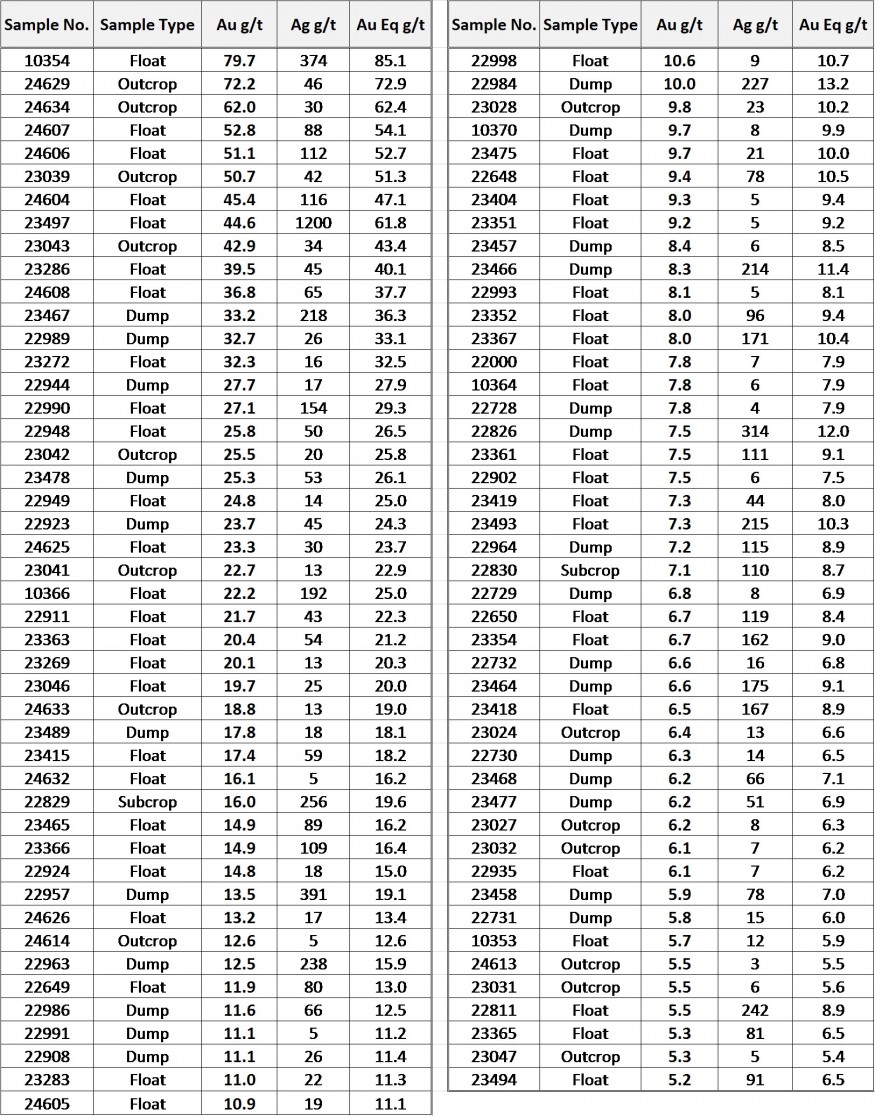“The Barrick Alliance positive assay results across the Togi Project, which includes the Togi Goldfield, highlight another underexplored epithermal district in Japan.
The 3,990-hectare Togi Project is located on the northern flank of a regional graben and hosted in early Miocene andesite volcanics under-lain by a northeast trending gravity anomaly.
Gold mineralization was discovered in the Togi area in 1896 and historic records from the Togi Goldfield report seven separate areas of workings along a 7 km trend which produced a combined 48,000 oz of gold and 180,000 oz of silver between 1910-21.
Sinter mapped at Urugami and the narrower stock-work style of quartz vein mineralization indicate the top of a hot-spring epithermal system is preserved, thus supporting the potential for deeper boiling-zone vein targets.
Gold and pathfinder element anomalism within the corridor are defined by BLEG samples assaying greater than 15 ppb Au, with a peak result from a sample in the Urugami Prospect returning an assay of 2,152 ppb Au.
Areas of intense clay alteration seen between the Hirochi Prospect and Urugami Prospect suggest continuity of the hydrothermal system between the two prospects.
Tectonic setting, Geology, and gold and copper mineralization in the Cenozoic magmatic arcs of Southeast Asia and the West Pacific.
Rock results presented in this news release and accompanying figures are from 1-3 kg selected grab and semi-continuous chip-channel outcrop, and selected grab of float and historic mine waste dump samples.
Certified Reference Materials were inserted by Japan Gold at every 20th sample to assess repeatability and assaying precision of the laboratory.
These statements are forward-looking in nature and, as a result, are subject to certain risks and uncertainties that include, but are not limited to, general economic, market and business conditions; competition for qualified staff; the regulatory process and actions; technical issues; new legislation; potential delays or changes in plans; working in a new political jurisdiction; results of exploration; the timing and granting of prospecting rights; the Company’s ability to execute and implement future plans, arrange or conclude a joint-venture or partnership; and the occurrence of unexpected events.
